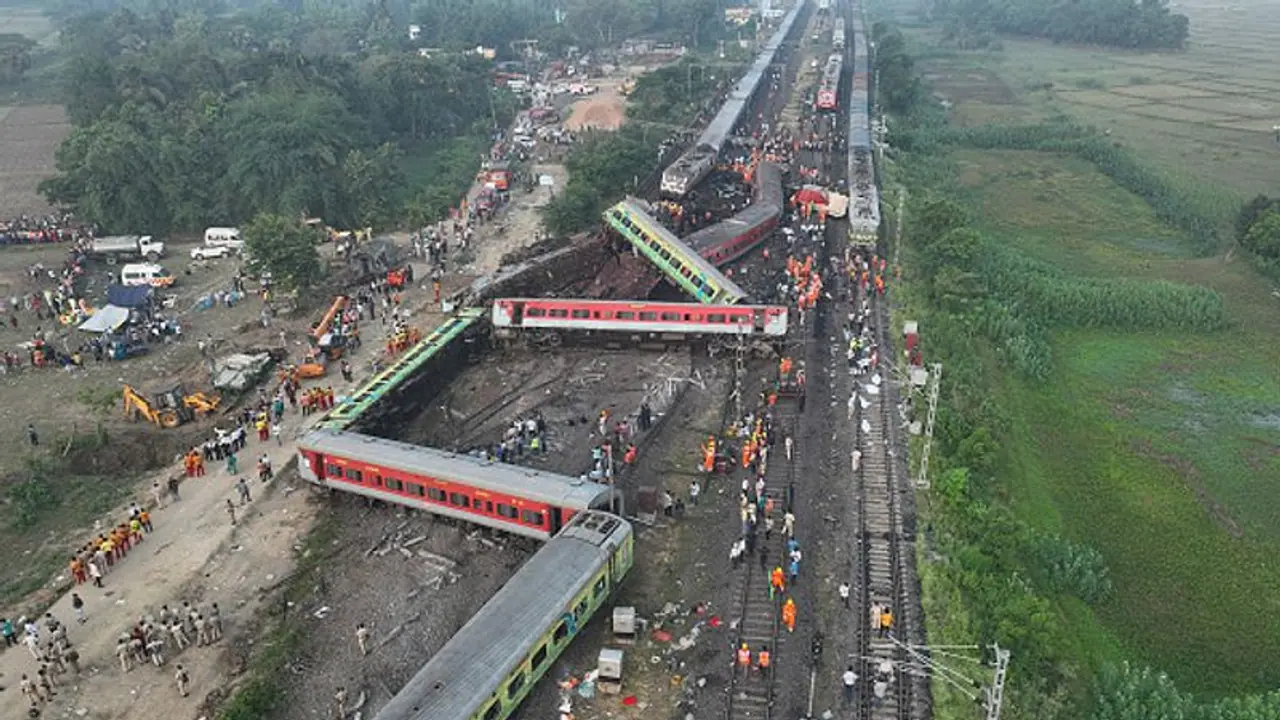The letter to the railway zones is the most recent in a string of directives sent out following the June 2 tragedy involving three trains in Balasore, Odisha, which resulted in the deaths of over 280 persons.
Days after the horrific train crash in Odisha's Balasore district, the Indian Railways on Saturday ordered a double-locking configuration for all relay rooms with train controlling mechanisms, relay huts housing level-crossing signalling and telecommunications equipment, and point and track circuit signals.

The letter to the railway zones is the most recent in a string of directives sent out following the June 2 tragedy involving three trains in Balasore, Odisha, which resulted in the deaths of over 280 persons.
According to the order, "access to the relay room" was crucial to the "signalling interference" that led to the Coromandel Express taking the loop line at Balasore and colliding with a stopped goods train.
Senior officials stated that the task now is to make the interlocking system "tamper-proof" because there is enough evidence to demonstrate that some sort of tampering was done with it.
"This double locking will ensure that no one can access these locations in isolation," said an officer.
The directive said that the level crossing gate (goomty/cabin), which houses signalling and telecommunications equipment in the station yard, should be handled as a relay hut and that the key to the current single lock would be with the Station Master (SM) until a double-locking system is supplied.
Odisha train crash: Shocking video emerges of moment when Coromandel Express crashed
"The relevant entries regarding issue and deposit of the key should be maintained by SM in the same manner as being done for station relay room. The proforma for handing over/taking back of the key by the ASM (assistant station manager) on duty shall have a column specifying that the location for which key had been taken by maintenance staff has been properly closed and locked, by the maintenance staff who is returning the key," the order stated.
The preliminary investigation revealed that some work was being done close to the accident site, according to officials.
The station manager got a disconnection memo (to turn off the interlocking system and begin work) and a reconnection memo (to turn on the system again to signal the completion of work), they said. They said that in actuality, the technician manipulated the location box to obtain a "green signal" for the Coromandel Express in order to get around the system because the work was not finished.
Thus, the current directive established suitable disconnect-reconnect procedures that must be followed for signal maintenance, repair, and modification activities.
It was stated that the first train should not depart from the reception signal (signals control the reception of trains into a station) once any work is finished and once the reconnection has been approved by the SM. Instead, it should be brought to a stop at the first stop signal.
Similar to this, the departure signal for run-through trains shouldn't be turned off until the first train has occupied the berthing segment (when the berths are all lined up at their designated locations).
Since the disaster, which is currently the subject of a CBI investigation, the Railway Board has issued three directions pertaining to signalling.
